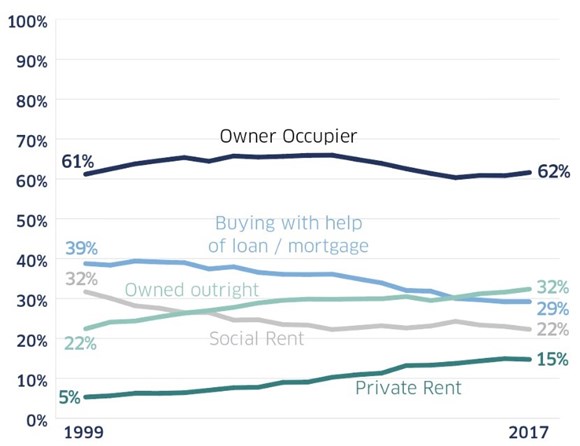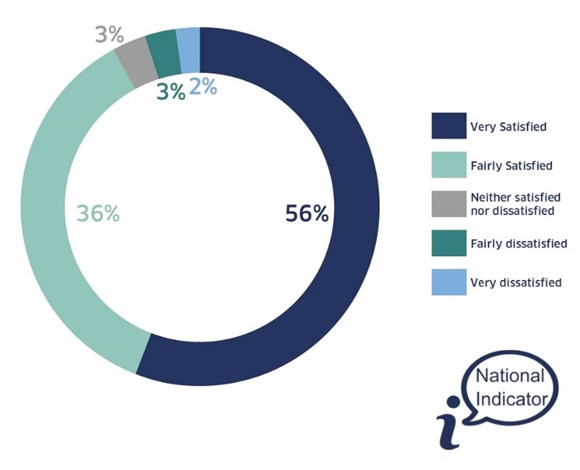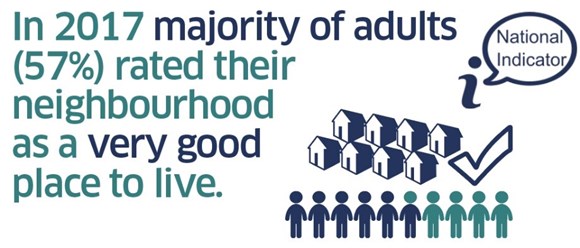Scottish Government
|
|
Life for people in Scotland in 2017
A National Statistics Publication for Scotland.
Six out of ten households were owner-occupiers. Over nine in ten adults viewed their neighbourhood as a very or fairly good place to live. The proportion of women in work is increasing and the proportion of adults without any qualifications is decreasing. Over half of all adults were managing well financially and most households had internet access at home. Recreational walking has risen and continues to be the most common type of physical activity. Over three in five adults viewed climate change as an immediate and urgent problem. There are high and increasing levels of cultural participation in Scotland.
These are just some of the findings from the wide-ranging 2017 Scottish Household Survey. The survey has been designed to provide reliable and up-to-date information on the composition, characteristics, attitudes and behaviour of Scottish households and individuals since 1999.
Scotland’s Chief Statistician today published the Scottish Household Survey (SHS) 2017 Annual Report (Scotland’s People) as well as the Scottish Household Survey (SHS) 2017 Key Findings, a Climate Change Topic Report and a data comic. These are web-only publications and can be found on the Scottish Government Website, at https://www.gov.scot/Topics/Statistics/16002/PublicationAnnual.
Some key findings from each chapter of the report are:
Housing
1-175
- The total number of households in Scotland has increased by 13 per cent from 2.19 million households in 1999 to 2.46 million households in 2017.
- The proportion of households in the private rented sector has remained similar at 15 per cent in the latest year 2017. Previously, the proportion of households in the private rented sector has grown steadily from five per cent in 1999 to 15 per cent in 2016, an estimated increase of 250,000 households.
- The percentage of households in the social rented sector declined from 32 per cent in 1999 to 23 per cent in 2007, an estimated drop of 150,000 households, mostly due to tenants buying their homes under Right to Buy. And the percentage has remained at between 22 and 23 per cent of all households since then.
- The percentage of households in owner occupation grew from 61 per cent in 1999 to 66 per cent in 2005, but then declined by an estimated 90,000 households between 2009 and 2014 to 60 per cent. The level has since remained around 61 and 62 per cent between 2015 and 2017.
2-195
- In 2017, over nine in ten households (92 per cent) reported that they were very or fairly satisfied with their housing, with 56 per cent being very satisfied and 36 per cent being fairly satisfied.
Neighbourhoods
- Overall ratings of neighbourhoods have been consistently high since the SHS began in 1999. Over nine in ten (95 per cent) adults view their neighbourhood as a very or fairly good place to live. This proportion was significantly higher than in each individual year between 1999 and 2013.
3-75
- The majority of adults in Scotland (57 per cent) rated their neighbourhood as a very good place to live in 2017.
- Neighbourhood ratings vary by area deprivation. Only 29 per cent of adults in the most deprived areas rated it as very good place to live, compared to 80 per cent in the least deprived areas in 2017. Adults in less deprived areas are more likely to rate their neighbourhood as a very good place to live and this has been a consistent finding in recent years.
- Almost eight in ten (78 per cent) adults felt a very or fairly strong sense of belonging to their neighbourhood in 2017 and the majority of adults strongly agreed that they would assist neighbours in an emergency and could rely on those around them for advice and support.
Click here for full press release
Original article link: https://news.gov.scot/news/life-for-people-in-scotland-in-2017





